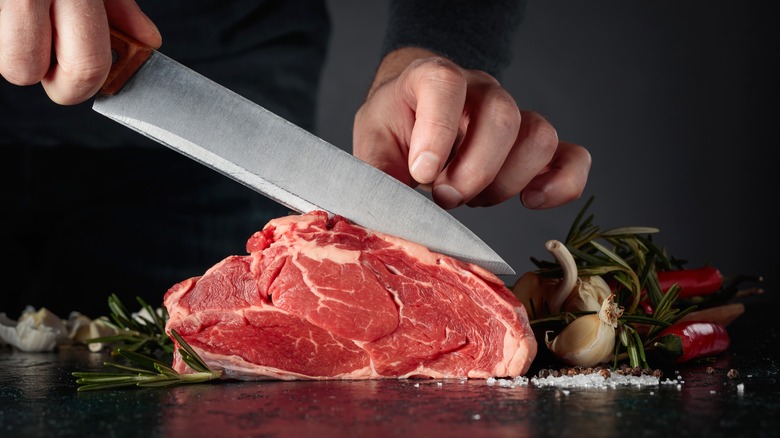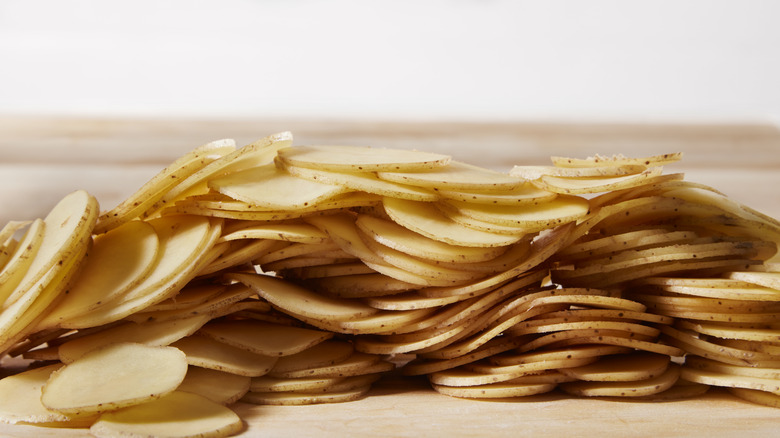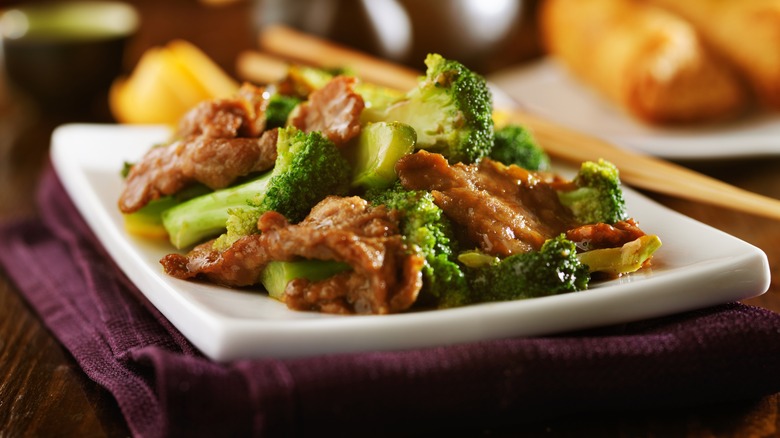The Simple Slicing Tip To Cook Your Meals In Record Time
Cooking can be a joyful process for some people who appreciate having the kind of project that can take up a whole day. Prep time can feel like a meditation, and the smells that fill the kitchen over a few hours are the stuff of memories. It can even be a fun, shared activity between friends or with kids learning how to create their favorite meals for the family.
That being said, there are also occasions when you don't have much free time to prepare your meal. So, whenever you need to get dinner (or any meal) ready in short order, here's a simple tip to help you make it happen. Slicing your food thinly — be it vegetables like carrots and potatoes or proteins like chicken, beef, pork, or fish — will ensure that you can speed up your cooking process considerably. Thanks to some scientific principles (and a little bit of heat), these smaller bites of food will be ready to go fast, helping you get your meal on the table before you know it.
The science of slicing
If you've ever made a massive turkey for Thanksgiving dinner and felt confident that it was cooked thanks to a crisp, golden brown exterior, only to find that the inside was raw, you're familiar with the physics at play here. The science has to do with "surface area." This geometric term refers to the total area of the faces of a three-dimensional object — like your food. The surface area is what is in contact with the heat you're applying to it (whether in an oven, frying pan, grill, air fryer, or otherwise). By slicing your food into smaller pieces, you're exponentially increasing that surface area, which means more of your food is exposed to that heat faster. It's also an uphill battle for heat to be absorbed by a bulky piece of food, and slicing thinly means each piece has less volume, which means it'll cook faster.
It's important to make sure you keep your pieces as uniform as possible to ensure even cooking throughout. But overall, the equation is simple: Less volume plus more surface area equals delicious and thoroughly cooked meals much more swiftly.
Dishes that welcome sliced ingredients in practice
Potatoes are a great example of a food you might crave but find the idea of waiting for them to bake off-putting. Thinly sliced oven-roasted potatoes are ready in a fraction of the time. Similarly, hearty root veggies like beets and carrots can take a while to fully cook, but it's easy to shave off time when they're thinly sliced.
Another benefit of having thin slices of food? Seasoning power. You have a lot more exposed surface area to take in all the goodness you choose for your dish. So hit those veggies with salt and pepper, herbs, your homemade spice blend, or a sauce, and expect major flavor. And if you go for a glaze — something like sweet potato slices with brown sugar — you'll wind up with more caramelized goodness bite for bite rather than large pieces where the flavor can't reach the interior.
Stir fry is a speedy style of cooking that tends to lean on small pieces, so an easy chicken stir fry or a Korean-style beef version, which features sliced skirt steak, are great ways to put this method into practice. Next time you're tight on time, take a few minutes to slice up your ingredients, and you can enjoy a full meal much faster.


